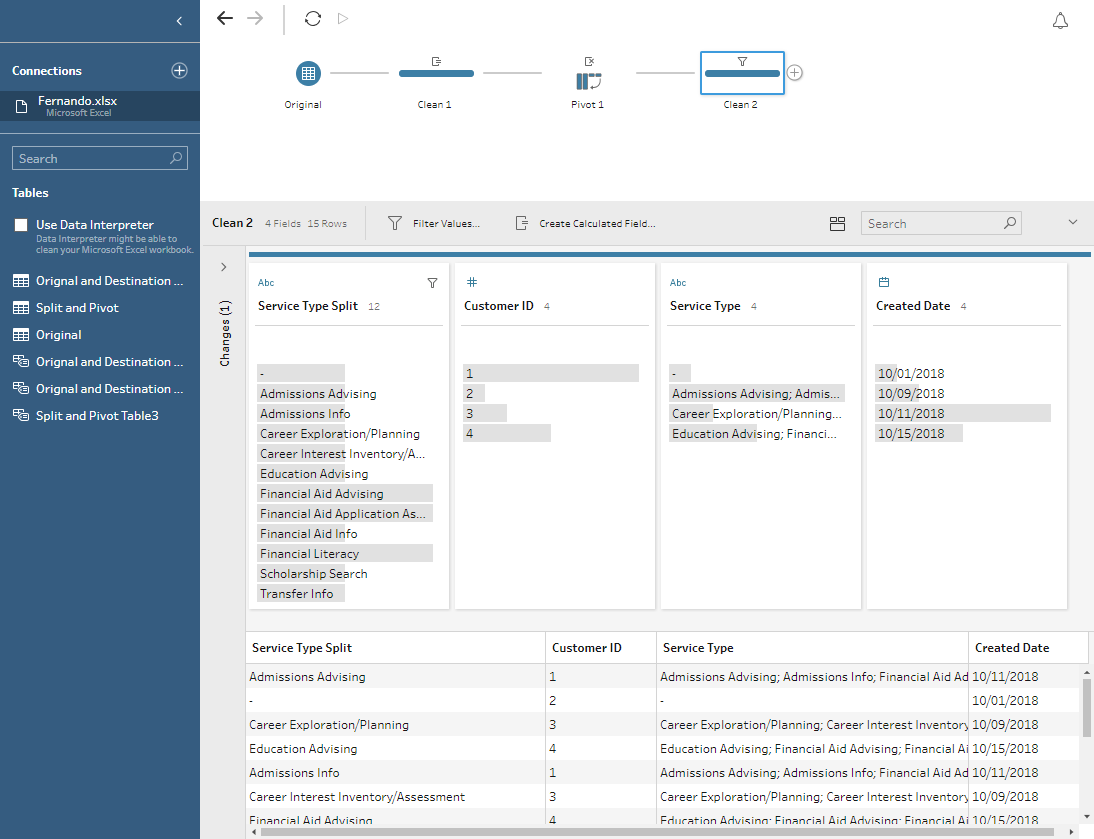

Union Tables from Different Data Sources.We’ll look at three scenarios in this post. When you hear that Tableau Prep helps you “prepare your data” you might wonder what it can do that Desktop can’t. New Values: The name give the new column that contains the original values from Pivot Column Values 1-3.If you’ve been using Tableau Desktop for a while you probably know that you can join, union and pivot data in the product. New Column Header: The name you give the new column that contains the new row values from New Value (from Column Header 1-3). Pivot Column Values 1-3: The columns whose values need to be pivoted into a single column. New Value (from Column Header 1-3): New names that you give to the original column headers, which are used as row values in the pivot.

Static Column: A comma-delimited list of the columns from Table, both dimensions and measures, which should not be included in the pivot. In the Edit Custom SQL dialog box, copy and paste the following custom SQL query and replace the contents with information about your table: Select, ' New Value (from Column Header 1)' as, as From Union ALL Select, ' New Value (from Column Header 2' as, as From Union ALL Select, ' New Value (from Column Header 3' as, as From For more information, see Connect to a Custom SQL Query. Runnerĭouble-click the New Custom SQL option in the left pane. The following table shows the results of this custom SQL query.

To remove a pivot, click the drop-down arrow next to the name of a pivot column, and then select Remove Pivot.

Make sure that the pivot columns and values look as expected before you begin your analysis. To add more data to the pivot, select another column, click the drop-down arrow next to the column name, and then select Add Data to Pivot. The new columns replace the original columns that you selected to create the pivot. New columns called "Pivot field names" and "Pivot field values" are created and added to the data source. Click the drop-down arrow next to the column name, and then select Pivot. You can pivot your data so that the vendor is in one field and the number of devices sold is in another field.Īfter you have set up the data source, in the grid, select two or more columns. If you are working with other data sources, you can Pivot using custom SQL (Tableau Desktop).įor example, suppose you have the number of devices sold by quarter for three vendors in three separate fields.
#Pivot in tableau prep pdf
pdf data sources, you can pivot your data from crosstab format into columnar format. When working with Microsoft Excel, text file, Google Sheets, and. Sometimes, analyzing data that is stored in a crosstab format can be difficult in Tableau.


 0 kommentar(er)
0 kommentar(er)
